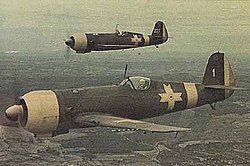




Before 1989, Romania was among the top ten arms exporters in the world, however its arms industry declined considerably during the 1990s. Exports fell from roughly $1 billion before 1989 to about $43 million in 2006, [1] and the number of employees also fell from 220,000 in 1990 to 20,000 in 2009. [2] Sales to the Romanian Armed Forces have plunged after Romania's accession to NATO in 2004, as factories continue to produce Warsaw Pact-caliber weapons and ammunition, which are incompatible with their Western counterparts.
Contents
- Manufacturers
- Weapons and equipment
- Small arms
- Remote controlled weapon stations
- AFVs
- Artillery
- Unmanned systems
- Aircraft
- Warships
- Weapons produced during World War II and the Interwar period
- Non-self-propelled weapons
- AFVs 2
- Aircraft 2
- Warships 2
- Weapons produced during World War I and prior
- Artillery 2
- AFVs 3
- Aircraft 3
- Warships 3
- See also
- References
As of 2009, sales are roughly evenly divided between the Romanian state and foreign customers such as European Union and Arab countries such as Egypt, Algeria and Iraq. [3] Other countries which have shown interest in Romanian equipment include Afghanistan, Israel, Switzerland, the United States, the United Arab Emirates, India, Georgia and a slew of African countries. [4] There have been some signs of slight recovery, with exports reaching €141 million in 2009. However, the arms industry in Romania still lagged behind neighboring countries such as Ukraine, [5] Bulgaria [6] and Serbia. [7]
With the start of the war in Ukraine in 2022, Romania's arms exports sharply increased, passing over €1 billion worth of exports in 2023. In 2024, 864 million euros of arms exports were reported. Some of the top customers for Romanian arms, which included small arms, ammunition, optics and other subassemblies, were Israel, Ukraine, Bulgaria, the Czech Republic and the United States. [8] [9]













